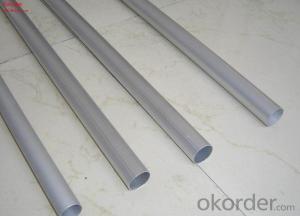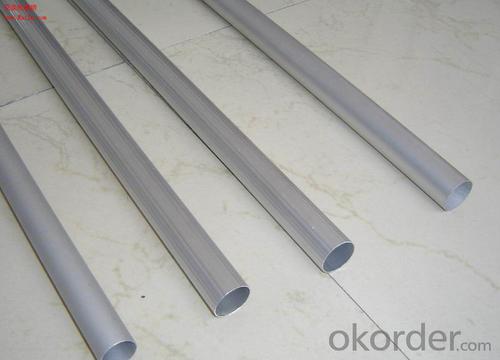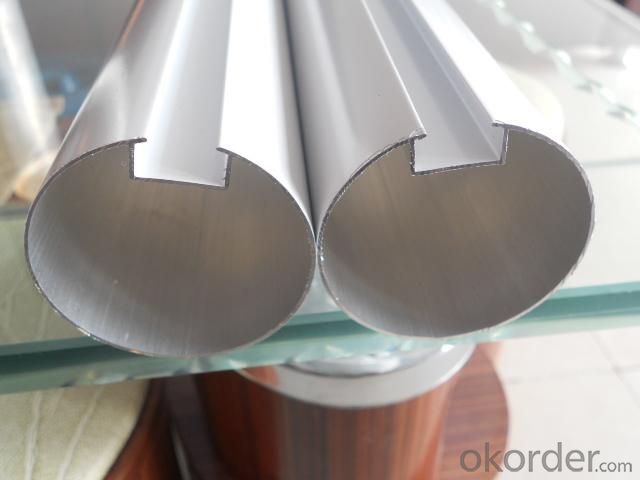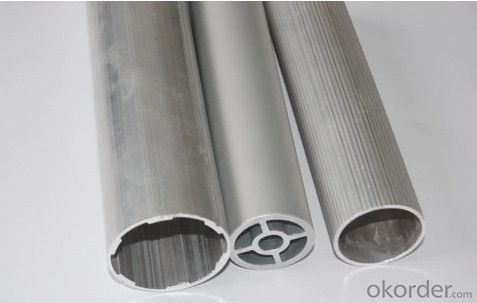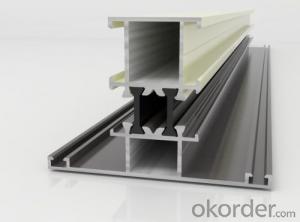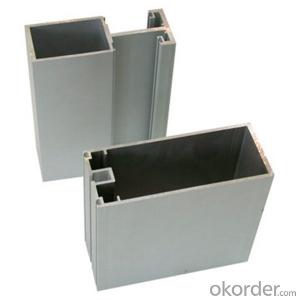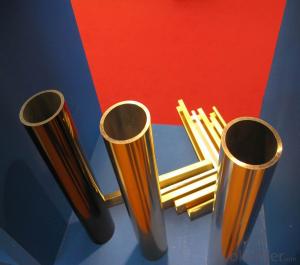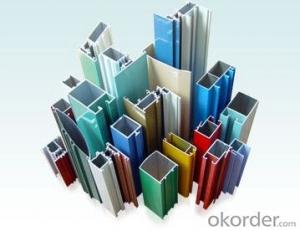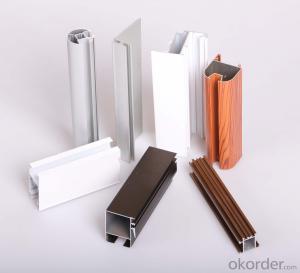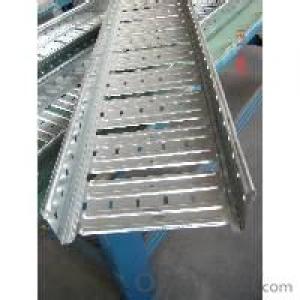T-Slot Aluminum Profiles for Anodized Aluminum Tubes Used on Furniture
- Loading Port:
- Shanghai
- Payment Terms:
- TT OR LC
- Min Order Qty:
- 5 m.t.
- Supply Capability:
- 500 m.t./month
OKorder Service Pledge
OKorder Financial Service
You Might Also Like
Specifications
Specifications
1.Type:Anodized aluminium tube
2.Thickness: 0.7mm
3.Temper:T3-T8
Specifications of Anodized Aluminum Tube:
1. Grade : 6063, 6061, 6060, 6005, 6005A, etc
2. Temper :T4, T5 or T6
3. Various colors :sliver, bronze, black, gold, blue, gray, champagne, bright, etc
4. Machining :cutting, punching, drilling, tapping, milling, bending
5. Wall thickness : 0.2mm-150mm or custom
6. Surface Treatment : Anodized,brushed,mill finished,polished, powder coated, sand blast, etc
7. Length :1m-12m
8. Outer Diameter : 4mm-2500mm
Applications of Anodized Aluminum Tube:
1.Agricultural
2.Electronics
3.Tower buildings
4.Material
5.Aviation fixtures
6.Automobile
7.Mechanical
8.Trucks
9.Ships
10.Aluminum window
11.Door
12.Curtain wall
Package of Anodized Aluminum Tube:
SMC Products are packed and labeled according to the regulations and customer's requests. Great care is taken to avoid any damage which might be caused during storage or transportation. In addition, clear labels are tagged on the outside of the packages for easy identification of the product I. D. and quality information.
1)SMC Standard
2)Customization
- Q: Can aluminum profiles be used for lighting fixtures or systems?
- Yes, aluminum profiles can be used for lighting fixtures or systems. Aluminum is a lightweight and durable material that is commonly used in the construction of lighting fixtures due to its excellent thermal conductivity and corrosion resistance. Aluminum profiles can be easily shaped and customized to meet the specific design requirements of lighting systems, making them a popular choice in the industry.
- Q: Are aluminum profiles suitable for constructing interior partitions or ceilings in commercial buildings?
- <p>Yes, aluminum profiles are commonly used for interior partitions and ceilings in commercial buildings. They offer several advantages such as strength, durability, and resistance to corrosion. Aluminum profiles are lightweight, easy to install, and can be custom designed to fit specific architectural requirements. They also provide good thermal insulation and can be used in both new constructions and renovations.</p>
- Q: Is it possible to recycle aluminum profiles and use them again in construction projects?
- <p>Yes, aluminum profiles can be recycled and reused in construction. Aluminum is highly recyclable, and the recycling process requires significantly less energy compared to the production of new aluminum. Recycled aluminum maintains its properties, making it suitable for various construction applications. This practice not only conserves resources but also reduces waste and environmental impact.</p>
- Q: What are the dimensions and sizes of aluminum profiles?
- The dimensions and sizes of aluminum profiles can vary greatly depending on their intended use and design. They can range from small and narrow profiles, such as 10mm x 10mm square tubes, to larger and wider profiles, such as 100mm x 100mm square tubes. Additionally, aluminum profiles can come in various shapes, including square, rectangular, round, and custom shapes, to accommodate different applications and structural requirements. It is important to consult specific product catalogs or manufacturers for precise dimensions and sizes of aluminum profiles.
- Q: What are the safety regulations concerning the use of aluminum profiles in construction?
- <p>Yes, there are safety regulations related to the use of aluminum profiles in construction. These regulations vary by country and region but generally include requirements for material strength, durability, and resistance to environmental factors. Standards such as ASTM B221 for aluminum and aluminum alloy extruded bars, rods, and profiles, and ISO 6361 for aluminum and aluminum alloy extruded profiles, provide guidelines on dimensions, tolerances, and mechanical properties. Compliance with local building codes and regulations is crucial, which may include fire resistance, load-bearing capacity, and corrosion resistance. Additionally, proper installation practices and adherence to manufacturer's specifications are essential to ensure safety and structural integrity.</p>
- Q: What are the reasons for the large number of products in the aluminum profile cutting machine after opening?
- When sawing, lubrication is insufficient, check the lubrication system, and the other may be aluminum material is not good
- Q: Can aluminum profiles be used in the construction of curtain walls?
- Yes, aluminum profiles can be commonly used in the construction of curtain walls. Aluminum offers durability, lightweight properties, and excellent corrosion resistance, making it a popular choice for curtain wall systems. Additionally, aluminum profiles can be easily fabricated and installed, allowing for flexibility in design and efficient construction processes.
- Q: How are aluminum profiles insulated?
- Aluminum profiles are typically insulated using a thermal break system. This involves placing a non-conductive material, such as polyamide or polyurethane, between the inner and outer sections of the aluminum frame. This insulation helps to reduce heat transfer and improve energy efficiency in buildings.
- Q: The subject is aluminum bearing in what u ~ on both sides of the track?? How can the track be fitted into this slot? Both sides secure 50Mechanical expert answers!The subject is aluminum bearing in what u ~ on both sides of the track?? How can the track be fitted into this slot? How can the seat of fixed motor on both sides be connected with the section bar?
- A little understanding of machinery, not what you say master. Say, for reference only. No, please correct me.
- Q: What specific criteria or standards must be met when utilizing aluminum profiles in the construction of environmentally friendly buildings?
- <p>In green building construction, aluminum profiles must meet certain sustainability and environmental requirements. These include high recyclability to reduce waste, low embodied energy to minimize environmental impact during production, and adherence to standards like LEED certification. Profiles should also be durable and low-maintenance to reduce the need for replacement and associated waste. Additionally, the use of eco-friendly coatings and finishes that do not release harmful substances is crucial. Compliance with regional green building codes and regulations is also mandatory.</p>
Send your message to us
T-Slot Aluminum Profiles for Anodized Aluminum Tubes Used on Furniture
- Loading Port:
- Shanghai
- Payment Terms:
- TT OR LC
- Min Order Qty:
- 5 m.t.
- Supply Capability:
- 500 m.t./month
OKorder Service Pledge
OKorder Financial Service
Similar products
Hot products
Hot Searches
Related keywords
